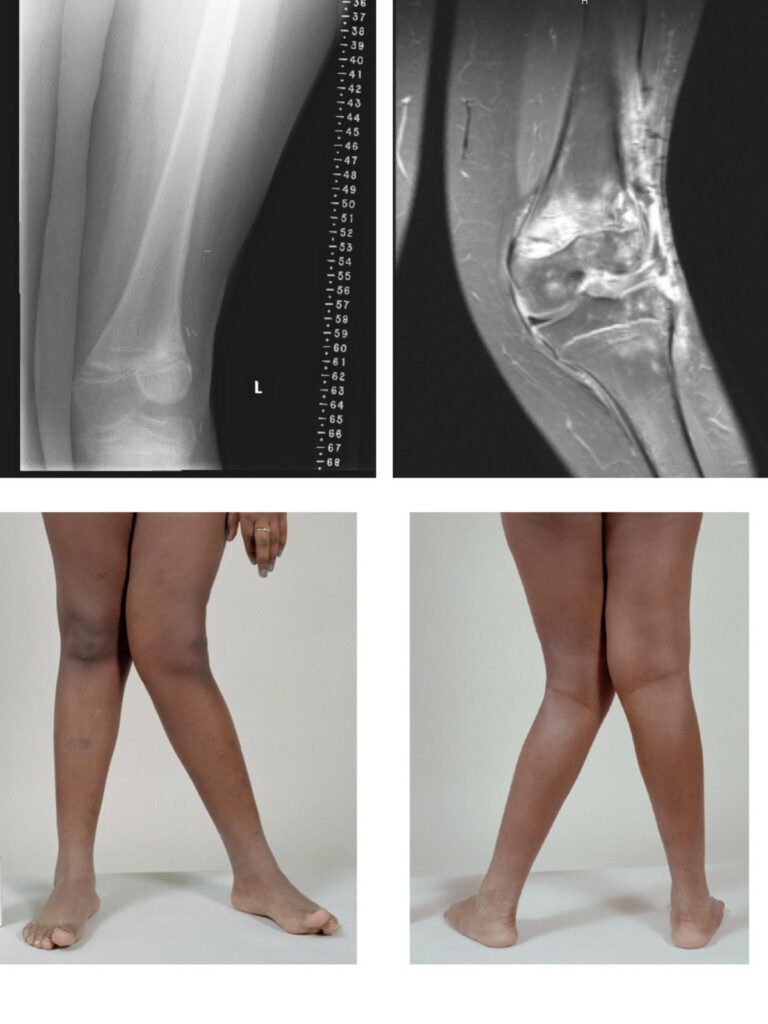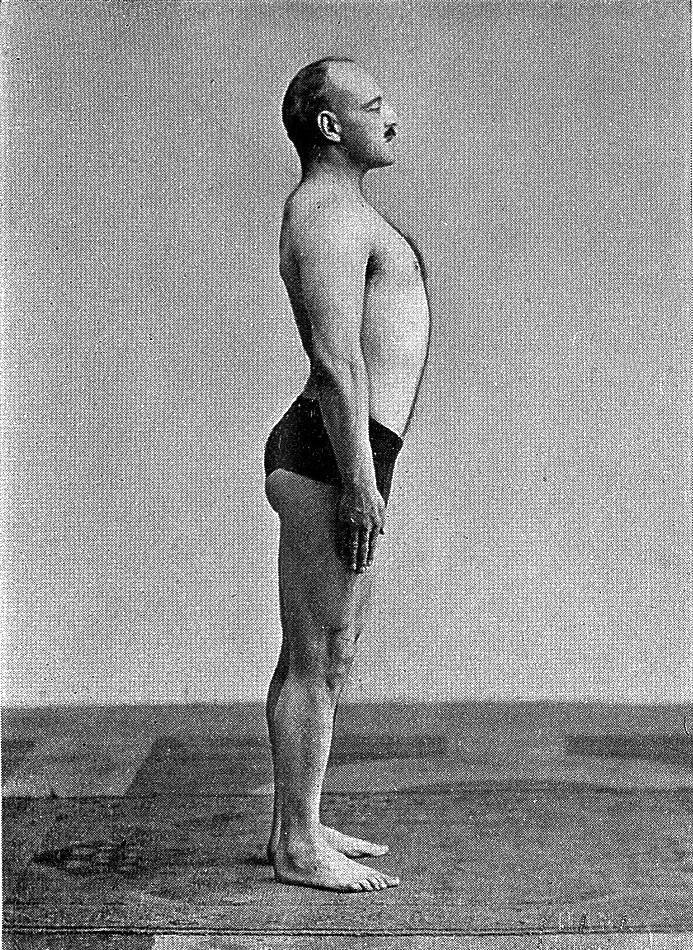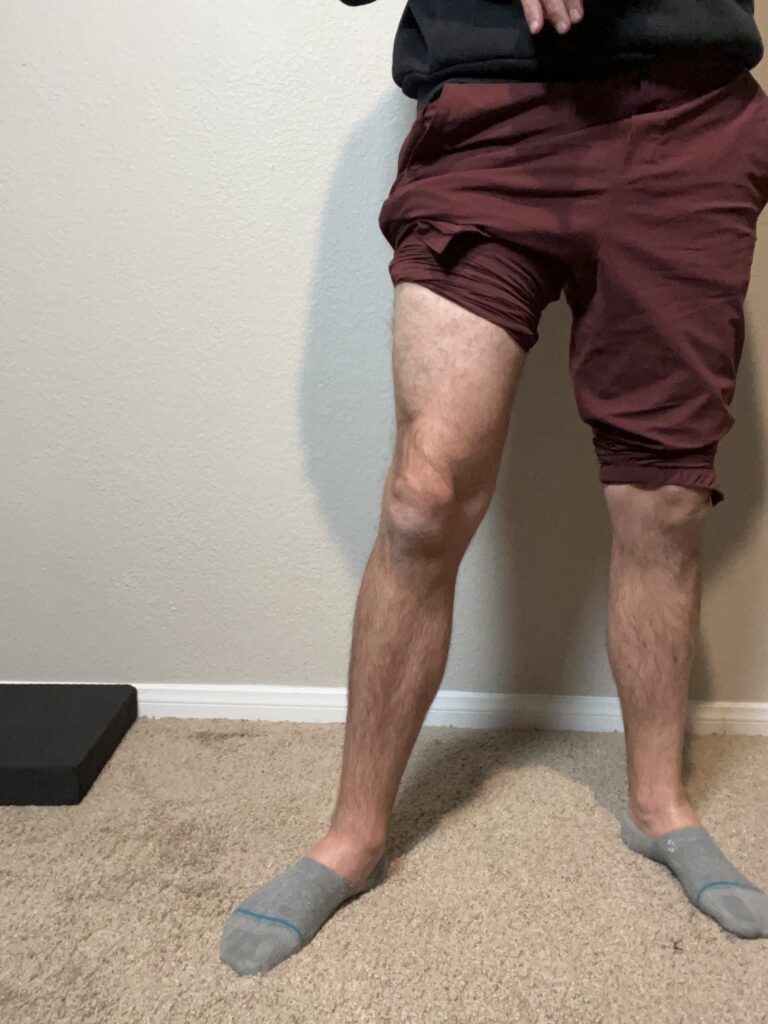Table of Contents
Why Do Your Knees Cave in?
Knee valgus, when the knee rotates inward, might look like a random body quirk.
But there’s more to this story. There’s more to it than the knees.
Knee valgus is a total body action. A strategy your body uses when it reaches a critical threshold.
Read on to learn about it.
Knee Valgus Biomechanics
The knee caves in for one reason only:
Inability to produce enough internal rotation.
Internal rotation (IR) occurs for force production. Whether it’s slowing your descent on a landing or putting force into the ground, IR happens.
In a perfect world, the individual joints would produce adequate IR to complete the task. This is called relative motion. This is when bones can move independently of one another.

But what happens if IR demands exceed what the body is capable of producing? Then, many bones move together as a unit. This can create focal loading on certain areas and contribute to knee valgus.
There are two ways these orientations can happen.
Anterior pelvic tilt
When the pelvis tips forward, it’s like a domino effect. Your femur rotates into IR, your tibia goes the other way, then BOOM. Knee valgus.

This behavior happens with increased posterior upper pelvis muscle activity. Here, the pelvis and femur move together as one unit.
Local knee valgus
In some cases, the hip cannot IR. This happens with reduced posterior lower pelvis muscle activity.

Here, the IR occurs locally at the knee. This creates a twist within the femur.
Is Knee Valgus the Bad Guy?
Is knee valgus a problem? For that, we gotta look at the research. My systematic review says this: ?
Some negative studies with knee valgus show:
But on the flip side, some studies state that knee valgus ain’t no thing but a chicken wing:
Moreover, look at people lifting heavy weights and basketball players. Both of these elite athletic populations rely on knee valgus to do incredible things. Is it all that bad?
I think the answer lies in the middle. If you are pushing max effort. I’m talking force production to the max. Knee valgus is a worthwhile strategy. It will happen naturally to allow you to hit the IR demands.
HOWEVER.
If you are doing low-intensity stuff. I’m talking bodyweight squats. It’s not a desirable strategy.
So the goal would be to improve your IR capabilities to where you only need knee valgus at high intensities. Ideally at an appropriate, controlled amount.
To do that, you need to improve 4 qualities.
Knee Valgus Exercise
To improve knee valgus, there are 4 things to work on:
- Hip mobility
- Knee mobility
- Slow speed force production
- High-speed force production
All these strategies will be attacked in the opposite direction of knee valgus. Doing so increases the number of movements you have available, reducing knee valgus.
Hip Mobility for Knee Valgus
As we discussed before, 2 possible strategies may contribute to knee valgus. You need to determine which camp you fall in.
1. Posterior Upper Compression
This occurs with reduced hip external rotation. For this, I like a wall squat to expand this pelvic region.
Try 5 sets x 5 breaths, 2 times per day for 2-4 weeks.
2. Posterior Lower Compression
This occurs with reduced hip internal rotation. For this, you want your squat to be a bit more hinge-like. I like box squats for this.
Try 5 sets x 5 breaths, 2 times per day for 2-4 weeks.
Knee Mobility for Knee Valgus
This section focuses on rotating the knee in the opposite direction of knee valgus.
Knee valgus = tibial ER + femoral IR
So we want to drive the opposite:
Tibial IR + femoral ER
We can do this with this passive movement for 3×10 reps.
Then progress to this more active variation for the same set/rep scheme.
Slow Speed Force Production
Hip and knee mobility are cool, but if you can’t bring it when the heat’s on, what’s the point?
That’s where this section comes in. You’ll want to absolutely NAIL a good position with both squats and split squats.
The keys to think about with these moves:
- Eyes to the horizon
- Keep weight on the inner heel and big toe base
- Slow breath cycle at the start
- Inhale on the lower
- Exhale on the raise
High Speed Force Production
The major key is getting this to transition to high level sport. Aka, we want to control knee valgus during high speed activities.
The best way to do this is to grade the IR demands. We want to find ways to reduce IR in the beginning. Then build up from there.
There are 2 ways I do this. I’ll either unweight the person with their jumps. Less weight mean less force to produce to complete the jump.
Or I’ll jump to a box. This reduces the amount of time you spend “falling” to the ground. Again, another way to limit IR.
Sum Up
These are the strategies I use to reduce knee valgus. Each step addresses the possible regions for valgus occurring.
The big key: Get the bones to move in the opposite directions, then progress intensity.

